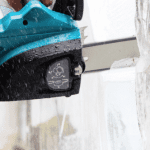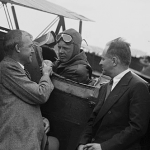 Music
Music  Music
Music  History
History 10 Less Than Jolly Events That Occurred on December 25
 Weird Stuff
Weird Stuff 10 Funny Ways That Researchers Overthink Christmas
 Politics
Politics 10 Political Scandals That Sent Crowds Into the Streets
 Weird Stuff
Weird Stuff Ten Bizarre Facts About The Doge Meme
 Our World
Our World 10 Ways Your Christmas Tree Is More Lit Than You Think
 Movies and TV
Movies and TV The 10 Coolest Stars to Set Sail on The Love Boat
 History
History 10 Things You Didn’t Know About the American National Anthem
 Technology
Technology Top 10 Everyday Tech Buzzwords That Hide a Darker Past
 Humans
Humans 10 Everyday Human Behaviors That Are Actually Survival Instincts
 Music
Music 10 Surprising Origin Stories of Your Favorite Holiday Songs
 History
History 10 Less Than Jolly Events That Occurred on December 25
 Weird Stuff
Weird Stuff 10 Funny Ways That Researchers Overthink Christmas
Who's Behind Listverse?

Jamie Frater
Head Editor
Jamie founded Listverse due to an insatiable desire to share fascinating, obscure, and bizarre facts. He has been a guest speaker on numerous national radio and television stations and is a five time published author.
More About Us Politics
Politics 10 Political Scandals That Sent Crowds Into the Streets
 Weird Stuff
Weird Stuff Ten Bizarre Facts About The Doge Meme
 Our World
Our World 10 Ways Your Christmas Tree Is More Lit Than You Think
 Movies and TV
Movies and TV The 10 Coolest Stars to Set Sail on The Love Boat
 History
History 10 Things You Didn’t Know About the American National Anthem
 Technology
Technology Top 10 Everyday Tech Buzzwords That Hide a Darker Past
 Humans
Humans 10 Everyday Human Behaviors That Are Actually Survival Instincts
10 Unique Ways People Became Ridiculously Rich
There are more than 22 million millionaires and 735 billionaires living in the U.S., while there are approximately 58 million millionaires and 2,781 billionaires around the world. Many of these people have achieved wealth through professions in finance and investment, engineering, executive, legal, and technology careers. A smaller number of people have found success through unconventional methods, inventions, and a little luck. Here are ten unique ways that people became ridiculously rich.
Related: 10 Most Dangerous Jobs That’ll Make You Rich
10 Selling Pixels on a Webpage
Alex Tew was a student in England about to start a three-year business management course at the University of Nottingham when he came up with a million-dollar idea. He was afraid that he would be left with student loan debt that would take years to pay off, so he came up with the idea to create a webpage unlike any other. He decided to sell a million pixels for $1 each, and they were sold in 100-pixel blocks, making the minimum purchase $100. Purchasers could add their own image and a hyperlink to their website.
The “Million-Dollar Homepage” went live on August 25, 2005. The first sale happened three days after the launch and was purchased by Tew’s friend. The next few sales were also made by his friends and family. After a press release, the Register published two articles about the website, which helped it earn $250,000 by the end of the month and reach #3 on Alexa’s list of movers and shakers on the internet, only behind Britney Spears’s website and Photo District News. Tew went on to sell the remaining pixels by January 2006 and became a millionaire from the idea.[1]
9 Santa Mail
Byron Reese had fond memories of receiving a letter from Santa Claus as a kid, and he used that good feeling to create a very lucrative business. In 2001, he founded SantaMail to create letters from Santa to send to children. Parents could visit the website and request a letter from Santa to their kids for the small price of $10. The letter would be stamped to confirm that it was from the North Pole, and it was carefully written to ensure the quality of work.
Within the first year of operation, Reese received 10,000 orders, which resulted in a revenue of $100,000. In just a short amount of time, SantaMail had become a million-dollar idea. The website now boasts that it has sent over 500,000 personalized letters to children. Letters now cost $14.95 and come in seven unique themes that are guaranteed to arrive by Christmas.[2]
8 Riverdance
Riverdance is a worldwide touring theatrical show that consists of Irish music and dancing. Bill Whelan composed a score that aired during the interval of the 1994 Eurovision Song Contest, which turned into a seven-minute piece of music known as “Riverdance.” Michael Flatley performed in the show and decided to turn that show into a full-length production after it received so much positive attention. Riverdance first opened as a show in Dublin in 1995, and tickets were released for a five-week run of shows that sold out in under three days. A few months later, the show moved to London and sold out a four-week run of shows before returning to Dublin for another sold-out run of six weeks.
Riverdance was now a worldwide hit and arrived in the United States in 1996. The show was so popular that they created separate companies to tour different cities at the same time. Riverdance has now played more than 15,000 performances and has been seen live by more than 30 million people across the globe. Riverdance has grossed over $1 billion, and Flatley is estimated to be worth more than $300 million.[3]
7 Cleaning Crime Scenes
Have you ever thought about what happens after the police finish at a crime scene? Somebody must do the dirty work and clean up the scene, and that is where Laura Spaulding enters the picture. Spaulding is a former police officer with knowledge of how crime scenes work, which means she knew that families were usually left to clean up after the homicide or suicide of a loved one.
Spaulding saw a new business opportunity with a decontamination service and started cleaning crime scenes on her own in 2005 under the business name Spaulding Decon. In her second year on the job, she started hiring employees and expanded her business to also clean up meth labs and hoarding. She now runs a multimillion-dollar franchise business that is the first of its kind. Spaulding admits that the job can be physically and emotionally draining, but she feels a need to help these families at the worst time of their lives.[4]
6 Slap Bracelets
A simple kid’s toy turned into a multimillion-dollar idea for Stuart Anders, a substitute teacher from Wisconsin. Anders pulled out a self-rolling measuring tape one day when it automatically curled up around his wrist. He instantly thought it would make a cool bracelet when covered in fabric. He kept his prototype in his truck for years until fate caused him to run into a man who was an agent for toy designers. Anders slapped the bracelet onto his wrist, and he knew the toy would be a hit.
The agent finally found a buyer who agreed to distribute Slap Wraps and gave both Anders and the agent royalties. The Slap Wraps wouldn’t be ready until a short while later, though, after some distribution issues and company swap, but soon every kid in school was slapping the neon-colored bracelets over their own wrists all day long. The fad quickly wore off, but you will still find kids today enjoying the toy when they discover the bracelet for the first time.[5]
5 Talking Bass
There’s a good chance that you or someone you knew once had a Big Mouth Billy Bass hanging on the wall. About 25 years ago, retailers were selling out of the novelty item that featured a fish on a plaque that sang “Take Me to the River” and “Don’t Worry, Be Happy” while moving its head toward the listener. Vice president of product development at Gemmy Industries, Joe Pellettieri, is known as the inventor of the item.
Pellettieri claims his wife gave him the idea, and he quickly worked with engineers to perfect the design. He showed early models to customers in Hong Kong, but he received poor reactions. He then went back to the engineers and told them to wiggle the fish’s tail and move its mouth when it is singing. He said the surprise factor of the fish moving worked much better with customers, and it took off from there. It is rumored that the Big Mouth Billy Bass made more than $100 million in revenue for the company.[6]
4 Beer Recipe
You’ve probably seen Jim Koch holding a beer in a Samuel Adams commercial, but he was a graduate of Harvard University before co-founding the Boston Beer Company. Koch is a fifth-generation brewer and used his family’s beer recipe to help create the company’s first beer, Samuel Adams. He co-founded the company in 1984 and went public with the company in 1995.
Koch currently has a net worth of over $1 billion and was ranked #1905 in Forbes Billionaires of 2023. In 2023, the Brewers Association released its annual review of production figures for U.S. craft breweries. Boston Beer Company ranked as the second largest U.S. craft brewery only behind D.G. Yuengling and Son Inc.[7]
3 Rent Dresses
Jennifer Hyman and Jennifer Fleiss decided to start a clothing rental business after Hyman watched her sister overspend on a new dress for a wedding. In 2009, Rent the Runway was born to allow customers to rent, subscribe, or buy designer apparel and accessories. The company offered clothes from more than 700 designers in various sizes. The subscription plans come in varying prices and make up for about 75% of their business.
In 2019, Rent the Runway increased its valuation to the unicorn level of $1 billion. Hyman remains with the company as the CEO and is also on the board. Fleiss left the company in 2017 to help co-found the concierge shopping service JetBlack but remained on the board. When the company went public in 2022, Jennifer Hyman was worth about $48.9 million, and Jennifer Fleiss was worth about $12 million.[8]
2 Bake Cookies
Who would have thought that baking cookies could turn into millions of dollars in revenue? Before baking cookies, though, Debbi Fields worked as a ball girl for the MLB team, the Oakland Athletics. She took the money that she earned to buy ingredients for her famous cookies. She even helped implement a milk-and-cookies break for umpires.
In 1977, she started the Mrs. Fields cookie business in California at the age of 20. Stalls selling cookies started popping up in shopping malls and airports across the U.S., and the business was moved to Utah in 1982. The company was then sold to an investment firm in the 1990s, but Fields remained a spokesperson for the company. She helped build the brand into a $450 million company, and she is estimated to be worth more than $200 million.[9]
1 Upside Down Bottle Ketchup Bottle
If you’ve squeezed ketchup from a Heinz bottle lately, then it was most likely a bottle invented by Paul Brown. He worked as the owner of a precision molding company when he had the idea to invent a plastic bottle closure that would allow someone to easily dispense ketchup. He applied for several patents and worked with one of his employees to design a shampoo bottle that could sit upside down without leaking.
They finally developed a petal-designed valve that worked for shampoo, and their idea was later used for several items, including items for NASA. It was in 1991 when Brown really hit it big after Heinz approached him to use his valve technology. More than 75% of all Heinz ketchup now squeezes from a bottle with Brown’s inverted device. The invention helped Brown earn $13 million.[10]








